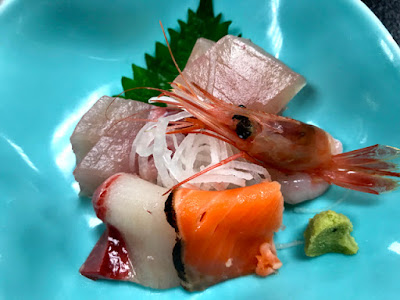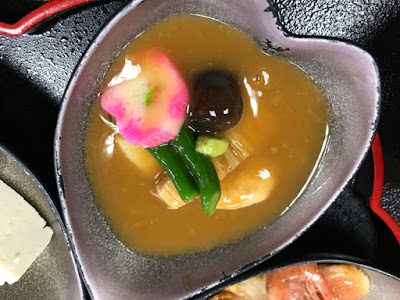 |
Since Russ’s computer is the one on which we do all of the blog posting, I was forced to bed early for the first time in many weeks, if you consider 10:30 early. Usually, I am up until 1-2:00 am, just like night watch on Worrall Wind, writing, editing and posting blogs, not only for us, but also for FFSAC.blogspot.com.
Consequently, we were up at 5:30, finishing up blog work that could be completed without Internet, 6:30 breakfast at hotel,
and off to Starbucks by 7:00 via underground cross walks and covered walkways.
Over a large latte and Russ a hot chocolate, I worked on updating and posting four blogs, two for us, and two for FFSAC Blog. Internet worked flawlessly, and got everything done by 8:30.
We headed back to hotel for a quick FaceTime with Abby, Neal, and Baby Bodie Burns Young who had just been released from the hospital about 24 hours after his delivery 3:00 pm PDT. We were ready to roll by 9:00 am Japan time. Weare so relieved and happy that Abby and Bodie are doing well.
Fish Market
Our first stop of the day was the fish market. We were there before the crowds,
but in no time the place began to fill up as people came to get their daily fish. Here are some photos of the fish market. Surprising to us were the crabs on ice.......still alive and breathing, and the specialty of eel livers.
 |
| A few veggies, too. |
Samurai Houses
Our second stop of the day was in a ancient Samurai residential area. Samurai were the soldiers during feudal ages but during the Meiji rule when Shogunates were being busted up in order to unify Japan, those houses were destroyed. Today’s Samurai are civil servants. In Kanazawa, some of the original Samurai houses were ruined, the reproductions and originals are privately owned by middle class people. We were able to visit one of the land lord’s home. The home was very nice, and the court yards, gardens and atriums were magnificent.
Samurai were richly rewarded for their service.
 |
| Thank you note in 1566 to a warrior Samurai
"We appreciate that you worked so hard to kill one high ranked soldier on the fourth of last month.......We are very happy that you brought us his head."
|
Between the second and third stop outside of Kenrokuen Garden, we ate lunch in a tea house.
 |
| Twine ropes from large pole next to tree trunk reach to the ground and keep snow from piling up on the branches of old trees. |
We ate together and enjoyed our time eating the beautifully displayed sushi and sashimi.
Garden
Stop number three, was the Kenrokuen Garden, one of the top three gardens in Japan. The other two are in Okayama and Tokyo. We saw the one in Okayama, so we have one more to go.  |
| This tree is very old and needs crutch support during winter snow loads. |
Castle
As we left the gardens, we spent a few minutes on the Kanazawa castle grounds. The towers are not as tall as some that we have seen, but the building itself looks quite large.
Geishas
The last stop of the day was in the Geisha quarter. Geishas are artisans who make their living through performance art. The girls (and sometimes boys) begin apprenticeship as early as age 15 as a Maiko.
A Maiko pays for her education to learn how to sing, dance, play an instrument, dress kimono, arrange flowers, conduct tea ceremony, buy her own clothing and makeup. It takes five years of apprenticeship to learn all of the Japanese cultural arts and to become a professional Geisha at age 20. We have heard that the oldest Geisha is in her 70’s in Kyoto. Geishas make about $10,000 a month! But they have many costs of elaborate kimonos.
While we were in the Geisha quarter, we visited a Geisha house. Geisha work during the night, so we did not see any during the day.
 |
| Kato, Japanese Harp |
 |
| Miwa shows us where a Geisha might perform. |

















































